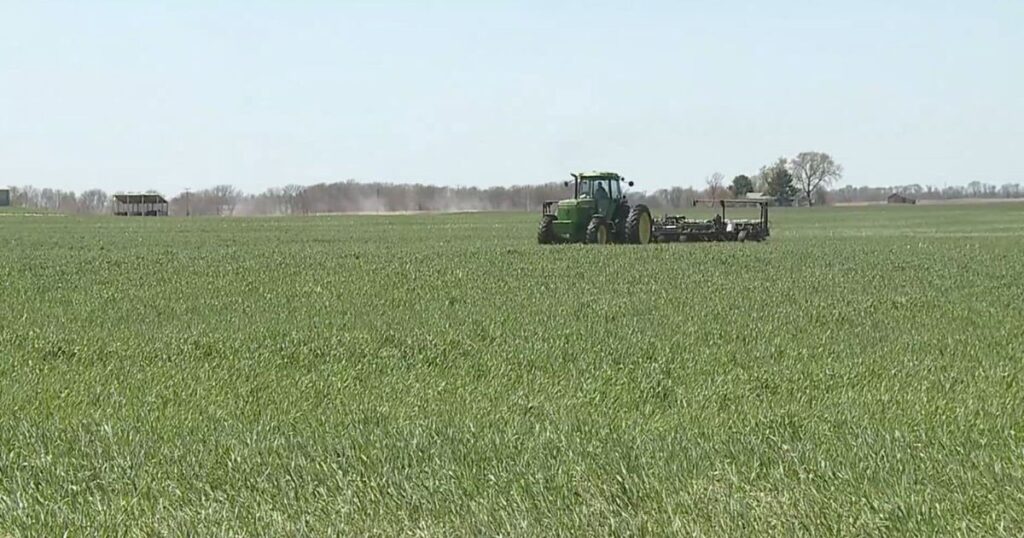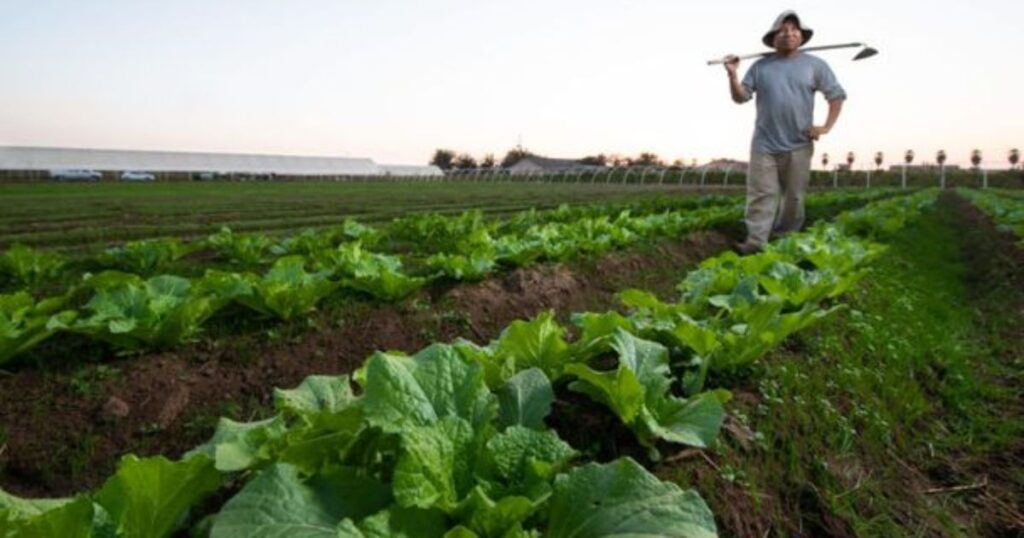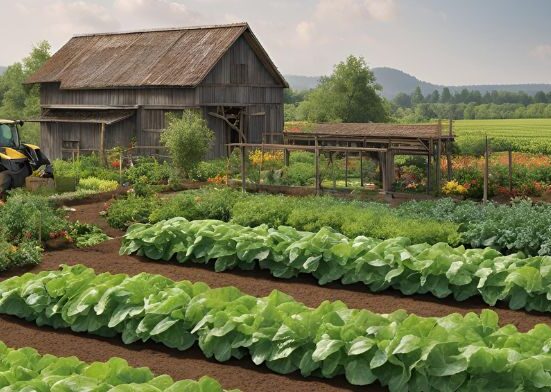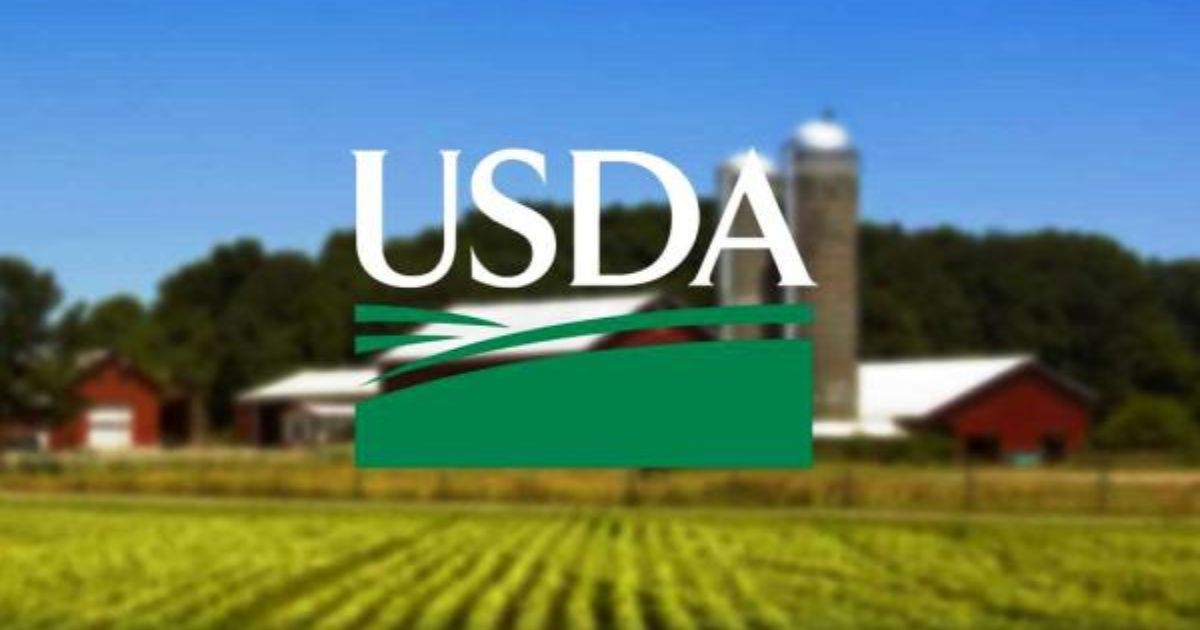The USDA, or US Department of Agriculture, has recently paused specific funding programs for farmers, sparking concern and uncertainty across the agricultural community. usda freezes farmer funding affects critical financial support intended to help farmers manage operational costs, invest in sustainable practices, and recover from market fluctuations. In this article, we break down what this freeze means, which programs are impacted, and how it could affect farmers, consumers, and the broader food supply.
The USDA Funding Freeze
On January 27, 2025, the White House issued an executive order that halts the distribution of money tied to the Inflation Reduction Act (IRA) of 2022, which allocated approximately $19.5 billion for agricultural programs over a decade. This action was part of a broader effort by the Trump administration to review and overhaul federal spending, with a particular focus on programs perceived as misaligned with current priorities, such as those tied to environmental conservation or diversity, equity, inclusion, and accessibility (DEIA) initiatives. The freeze also extended to $3.1 billion in Partnerships for Climate-Smart Commodities assistance for 141 projects, further amplifying its impact.
Despite initial claims that farmer-specific programs would be exempt, Understanding Food Costs and Modern Farming Practices reports soon emerged of significant disruptions. Farmers who had already signed contracts for projects such as installing water systems, planting cover crops, or transitioning to renewable energy found themselves without promised funds. This led to immediate financial strain, as many had already invested in materials and labour, expecting federal reimbursement. usda freezes farmer funding, coupled with a lack of clear communication from the usda funding freeze, has created a ripple effect of uncertainty, particularly as the spring planting season looms.
Programs Affected by the Freeze

The usda grant freeze has impacted a range of programs critical to farmers and rural communities. Below, we outline some of the key initiatives affected, based on available information.
Environmental Quality Incentives Program (EQIP)
The EQIP, administered by the USDA’s Natural Resources Conservation Service (NRCS), is for farmers to implement conservation practices, such as improving water systems, reducing soil erosion, or adopting sustainable grazing methods. usda farmer funding freeze has halted payments for existing contracts, leaving farmers like Missouri cattle producer Skylar Holden in financial jeopardy. Holden, who signed a $240,000 contract for water lines, fences, and a well, reported that he had already paid for materials and labour, only to be informed that his contract was frozen with no clear timeline for release.
Conservation Stewardship Program (CSP)
The CSP supports farmers in maintaining and improving conservation efforts on their land, such as adopting cover crops or enhancing wildlife habitats. The trump freezes usda funds has disrupted payments for these long-term contracts, affecting farmers who rely on these funds to sustain environmentally friendly practices.
Agricultural Conservation Easement Program (ACEP)
This program provides funding for the protection of farmland and wetlands through easements. The freeze has delayed payments, affecting farmers’ ability to preserve their land for both agricultural use and environmental benefits.
Partnerships for Climate-Smart Commodities (PCSC)
The PCSC initiative, funded with $3.1 billion, supports 141 projects aimed at reducing greenhouse gas emissions through methods such as cover crops and no-till farming. The American Soybean Association reported that payments for these projects were suspended, causing alarm among growers who had already implemented costly practices.
Rural Energy for America Program (REAP)
REAP offers loans and incentives for solar and other renewable energy projects. Panel installations. Usda freeze Farmers like Laura Beth Resnick in Maryland, who invested $72,900 in solar panels, expecting a USDA grant to cover half the cost, have been left in financial limbo due to the freeze.
Local Food Purchase Assistance (LFPA) and Local Foods for Child Care Facilities and Schools (LFSCC)
These programs, aimed at strengthening local food systems, have faced funding terminations or delays. The loss of these funds threatens the viability of local food networks, which are critical for small-scale farmers and rural communities.
Sustainable Agriculture Research and Education (SARE)
The SARE program, which enjoys bipartisan support, provides grants for farmers to experiment with innovative farming methods, address business challenges, and share knowledge with their communities. Nearly $50 million in SARE funding remains on hold, What Is Agriculture A Simple Guide for Everyone with a looming deadline for unspent funds to be given back to the US Treasury. This delay has disrupted projects addressing drought, pests, and yield challenges.
Additional Programs
A letter from the USDA to Senator Amy Klobuchar (D-MN) revealed that additional programs are still frozen, including:
- American Rescue Plan Technical Assistance Investment Program
- Bioproduct Pilot Program
- Increasing Land, Capital, and Market Access Program
- Regional Conservation Partnership Program. These programs, many funded through the IRA or the Infrastructure Investment and Jobs Act, support a range of agricultural and rural development initiatives.
Immediate Impacts on Farmers
The nrcs funding freeze has had immediate and tangible consequences for farmers across the country. Many had made significant investments based on signed contracts, only to learn that the promised funds were unavailable. For example:
- Ang Roell, a Massachusetts farmer and beekeeper, planned to install deer-proof fencing and irrigation systems for a new orchard with $30,000 in federal grants. Without these funds, Roell risks losing young plants to deer and drought as the spring season approaches.
- Brian Geier and Elizabeth Tobey, farmers in Indiana, have resorted to private loans to cover costs for projects initially supported by USDA funding, adding to their financial burden.
- Pasa Sustainable Agriculture, a recipient of $55 million for climate-smart farming projects across 15 states, furloughed 60 employees starting April 1, 2025, due to the funding freeze. The organization had already disbursed $1.87 million to 143 farms, with another $1.7 million in projects awaiting funding.
The timing of the usda grant freeze exacerbates these challenges. Spring is a critical season for farmers, with planting and livestock management requiring significant upfront investments. Delays in funding disrupt these cycles, potentially leading to crop losses, reduced yields, or even farm foreclosures in extreme cases.
Broader Context: Policy Shifts and Political Dynamics

The federal grants paused is part of a larger policy shift under the Trump administration, which has prioritized reducing federal spending and reorienting agencies toward its “America First” agenda. Agriculture Secretary Brooke Rollins has criticized the Biden administration’s policies, arguing that funds were misallocated to non-agricultural programs, such as DEIA initiatives or “far-left climate programs.” Rollins has emphasized the USDA’s commitment to honouring obligations to farmers while ensuring future funding aligns with priorities such as competitiveness and rural economic growth.
However, the ira funding freeze has sparked backlash from agricultural organizations and farmers, many of whom supported Trump in past elections. The National Farmers Union, Hybrid Farming: The Future of Sustainable Agriculture led by president Rob Larew, has highlighted the economic pressure caused by delayed payments, particularly for conservation programs. The American Farm Bureau Federation, through President Zippy Duvall, expressed relief at the release of $20 million in funds but urged the USDA to expedite the release of all remaining funds to alleviate uncertainty.
Legal challenges have further complicated the situation. Federal courts issued temporary blocks on the funding freeze in late January and early February 2025, citing harm to farmers and non-profits reliant on these funds. Despite these rulings, the USDA has been slow to release funds, and ongoing appeals have left the status of many programs unclear.
Partial Release of Funds
USDA announced the distribution of $20 million in funding on February 20, 2025. IRA funding for contracts under EQIP, CSP, and ACEP marks a small step toward addressing the crisis. Secretary Rollins described this as the first of several “tranches” of funding releases, with additional announcements expected. However, this amount represents only a fraction of the billions frozen, and the USDA has not disclosed how the funds were distributed across programs or regions.
Farm organizations such as the National Farmers Union and the American Farm Bureau Federation welcomed the release but stressed that it was insufficient. The 2025 Farm Bill Explained: Key Changes and Impacts The uncertainty surrounding the remaining funds continues to hinder farmers’ ability to plan for the upcoming season.
Economic and Community Impacts
The agriculture department contracts terminated compounds existing challenges for farmers, who have faced declining incomes due to low crop prices in recent years. The Trump administration’s first term saw record farm payments of $217 billion, including crop support and disaster aid, which bolstered rural economies. However, the current freeze threatens to undermine this support, particularly for small and mid-sized farms reliant on conservation and renewable energy programs.
Rural communities are also feeling the ripple effects. How To Freeze Peaches: Easy Steps For Freshness Organizations like New Jersey Resource Conservation and Development (RC&D) have suspended programs such as the Regenerative Farm Network and the Grazing Initiative, which support local markets for grass-fed beef. These cuts limit farmers’ ability to innovate and compete, potentially stifling rural economic growth.
What’s Next?
The usda funding freeze impacts farmers halting grants and reimbursements ongoing review of IRA funding and other programs will likely shape the future of agricultural support. Secretary Rollins has promised to prioritize funding for farmers and ranchers, but the lack of transparency and clear timelines has frustrated stakeholders. Legal battles over the freeze continue, with courts ordering the release of funds, yet bureaucratic delays persist.
Farmers and agricultural organizations are urging the USDA to:
- Expedite the release of all frozen funds to honour existing contracts.
- Provide clear communication about the status of affected programs.
- Ensure that future funding decisions prioritize agricultural needs over political agendas.
In the meantime, farmers are exploring alternatives, such as private loans or scaling back projects, but these options often come with significant financial risks. The National Sustainable Agriculture Coalition is one example of an advocacy group. We are tracking developments and pushing for greater transparency from the USDA.
How Farmers Can Stay Informed

Given the evolving nature of the situation, farmers and stakeholders are encouraged to stay updated through reliable, non-partisan sources, such as:
- AP News
- NPR
- PBS News
Additionally, organizations like Good Agriculture are offering free weekly funding alerts to help farmers navigate available opportunities during this period of uncertainty. Modern Commercial Agriculture: Feeding the Global Economy Farmers can also engage with local farm bureaus or advocacy groups to voice concerns and access resources.
Conclusion
The 2025 USDA funding freeze has created significant challenges for farmers, rural communities, and agricultural organizations. While the release of $20 million in funds is a positive step, the broader freeze on billions of dollars continues to disrupt critical programs. As the USDA reviews its priorities, farmers are left grappling with financial uncertainty at a pivotal time in the agricultural calendar. The resolution of this crisis will depend on swift action from the USDA, clear communication, and a commitment to supporting the backbone of American agriculture: its farmers.
For the latest updates, farmers and stakeholders should monitor official USDA announcements and engage with advocacy groups to ensure their voices are heard. The agricultural sector’s resiliency will be put to the test. However, by working together and making wise choices, farmers can overcome these obstacles and continue to provide communities across the nation with food, fuel, and sustenance.
FAQ
1. Why did the USDA freeze funding for farmers?
The USDA temporarily halted specific funding programs due to administrative reviews, budget adjustments, or compliance issues. Particular reasons vary by program.
2. Which farmers are affected by this freeze?
Farmers participating in affected USDA programs, such as disaster relief, conservation, or grant initiatives, may experience delays in funding.
3. How long will the funding freeze last?
The duration is currently unclear. The USDA has indicated it will resume disbursements once reviews and necessary adjustments are complete.
4. Can farmers still apply for new programs during the freeze?
Applications may still be accepted, but funding approvals or payouts could be delayed until the freeze is lifted.
5. What can farmers do to cope with the funding freeze?
Farmers should explore alternative financial options, consult with local agricultural offices, and stay updated via official USDA announcements to plan accordingly.







